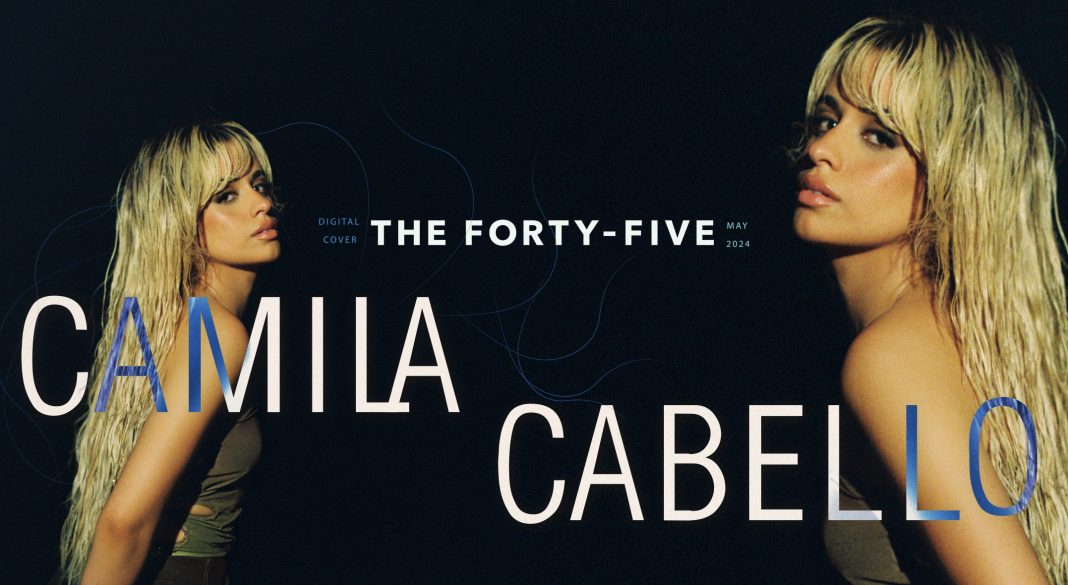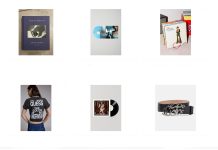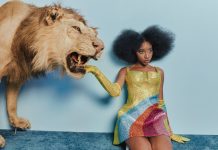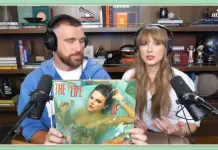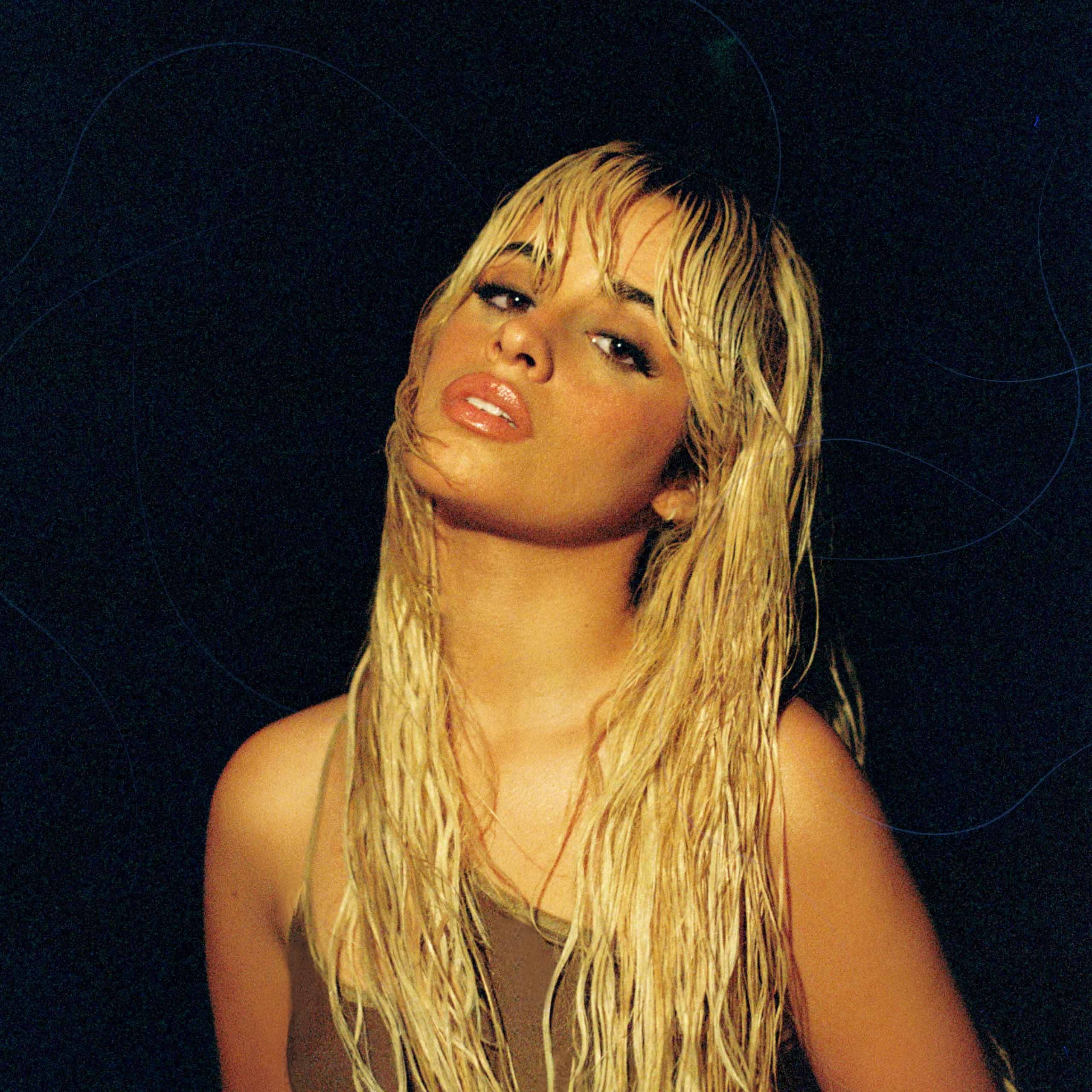
Camila Cabello
Camila Cabello has levelled up. With a new sound, new outlook and new aesthetic, the pop icon is making the music she wants to make – and it might just surprise you.
Words: Celia Almeida. Photos: Rahul Bhatt
The first time I saw Camila Cabello in the flesh was back in February 2018, at Gramps, a scrappy hand-painted bar in the heart of Miami’s world-famous, muraled Wynwood neighbourhood. Now surrounded by cranes and rising skyscrapers, the dive is the last vestige of a rapidly changing district in an ever-evolving city.
Cabello was different then, too. After spending the latter half of her teen years as one-fifth of Fifth Harmony — one of the best-selling girl groups of all time — she was stepping out on her own and celebrating the release of her self-titled debut album, which had already spawned the Billboard No. 1 single ‘Havana’, a tribute to the city where she was born and spent the first few years of her life. Fittingly, Spotify threw her a Cuba-themed pop-up meet-and-greet. One month shy of her 21st birthday and with a fan base that skewed even younger, the bar served only non-alcoholic mojitos that day.
“I don’t even remember a time where I drank non-alcoholic mojitos,” Cabello laughs when reminded of the launch event, more than six years later.
Now 27, Cabello has evolved almost as dramatically as the South Florida city she calls home. In that time, she’s released three studio albums, entered and exited a high-profile relationship with singer Shawn Mendes, made her acting debut as the lead in a live-action adaptation of Cinderella, and dyed her hair platinum blonde to embody what she calls the “baddie energy” present on her upcoming album, ‘C, XOXO’.
It’s a week on from her guest appearance during Lana Del Rey’s Week-Two headline set at Coachella and she’s still beaming. Today, she’s wearing a white tee with blue lettering reading “World’s Best Ex-Girlfriend”, a near-replica of the shirt she wore during her festival performance, though the one she donned that day read “Pepsi Cola,” a nod to the infamous opening line of Del Rey’s ‘Cola’, that reads “My pussy tastes like Pepsi cola”. The coy reference is in keeping with the mode in which we find Cabello on ‘C, XOXO’. Though she’s explored themes of sexuality in her music before — particularly on her second album, ‘Romance’ — the new record finds her in a more freewheeling and liberated space, one where her language is more explicit and id-driven.
“Bottle rocket, on the carpet/Threw it back and he caught it,” she sings on her sex-positive lead single ‘I Luv It,’ which Del Rey dueted on when Cabello first performed the track at Coachella. Cabello is still processing the experience, during which Del Rey, one of her songwriting idols, sang the earworm chorus back to her onstage after the performance. Del Rey has also posted photos of Cabello on her Instagram account and shouted out the track on her social channels, and she’s personally expressed her love for the song.
“She was like: ‘I literally made this loop of the car video that you posted ’cause I couldn’t stop listening to the song,’” Cabello reveals, alluding to the first clip she posted of ‘I Luv It’, her braided blonde hair billowing out of a car window as she sang along to the hyperpop chorus.
The 27-second video was the first taste of what Cabello calls “the ‘C, XOXO’ world and aesthetic.” It’s a world that values and voices libidinous fantasies with a provocativeness that’s more playful than it is sultry; a world where who you bring home at the end of the night is less important than how much fun you had luring them.
Del Rey came out as an enthusiastic early adopter, but the preview clip of ‘I Luv It’ was met with mixed reactions and immediately memeified upon its release in early March. Among the most notable contributions was a video posted by Charli XCX, in which she sings her 2017 track ‘I Got It’ inside a car, a gesture many interpreted as a cheeky way of pointing out similarities between the two songs.
Cabello is well aware of the discourse and public reception.
“They don’t ‘luv it,’” she jokes half-heartedly when I bring up her detractors. But she’s also equal parts candid and diplomatic in discussing the criticism.
“I think, in the moment, I react in the most kind of human, visceral, immediate sense… My feelings are a little hurt,” she admits. She’s “gotten off the internet more and more” over the past couple of weeks, “and I can look at things with perspective.” Ever the thoughtful Pisces, she paraphrases a verse from the Bhagavad Gita that has resonated with her recently: “You have a right to perform your prescribed duties, but you are not entitled to the fruits of your actions.”
She’s taken it to mean she can control the art, but not the response. Surprisingly, she empathises with the many voices who’ve taken to the internet to express their confusion or disapproval of her latest musical and aesthetic turn.
“I don’t take it personally because I feel like I’m honestly one of those people that — sometimes I get things after other people get them,” she says. “As a music fan, it’s not the coolest thing to say about myself, but it’s true.”
The internet has a tendency to reject unexpected musical shifts from mainstream pop stars, only to turn around and declare them “camp” before reclaiming them as classics a few years later. She credits TikTok’s ability to revive forgotten or overlooked music — a phenomenon Cabello says she’s benefited from, too. ‘Shameless’, the opening track on ‘Romance’, gained online popularity “two or three years after it was released.”
“That is really exciting as an artist,” says Cabello, adding that it’s a welcome contrast from the “scarcity mindset” of the old music industry model. “It’s less pressure for it [not] to be like, ‘They have to get it right now or they never will!’ It’s like, no. They could get it in 10 years. Or in 50. Whatever, you know?”

Though pragmatic, it’s clear Cabello’s eager for fans to dive headfirst into her new sound and the body of work she’s created with producers and collaborators Jasper Harris and Pablo Díaz-Reixa, better known as El Guincho. Both producers have co-piloted left-turn reinventions for some of Cabello’s contemporaries in recent years; Harris with Tate McRae’s sophomore album, ‘Think Later’, and El Guincho with Rosalía’s ‘El Mal Querer’ and ‘Motomami’.
Similarly, they steer Cabello in a wildly different musical direction on ‘C, XOXO’. Where her first three solo albums were straightforward pop albums, influenced by the Latin music she grew up listening to as the daughter of a Mexican father and Cuban mother, her fourth album pays homage to the American music she began hearing when she emigrated from Havana to the United States as a school-aged child; and specifically the aughts hip-hop she listened to in her pre-teen and early teen years, before she joined the music group that would make her a global star. That’s the primary influence here — it’s Cabello’s most sample-heavy record to date and her most danceable — but she manages to reference classic tracks from the era and filter them through her sonic touchstones, from reggaeton beats to upbeat but still forlorn balladry. There are unexpected twists as wild as that on ‘I Luv It,’ making for a riveting listen.
Harris and El Guincho were instrumental in probing those influences. “Jasper and Pablo are both such huge hip-hop heads,” she says. For every mainstream rapper she’d mention as inspiration during studio sessions, “they would show me five underground references that I didn’t know about.”
“I wasn’t one of those cool kids that had very underground taste,” says Cabello. “I really liked, honestly, Top 40, and what was popular.” Working with Harris and El Guincho helped her delve deeper. “I think I really got in my student bag [with] this album.”
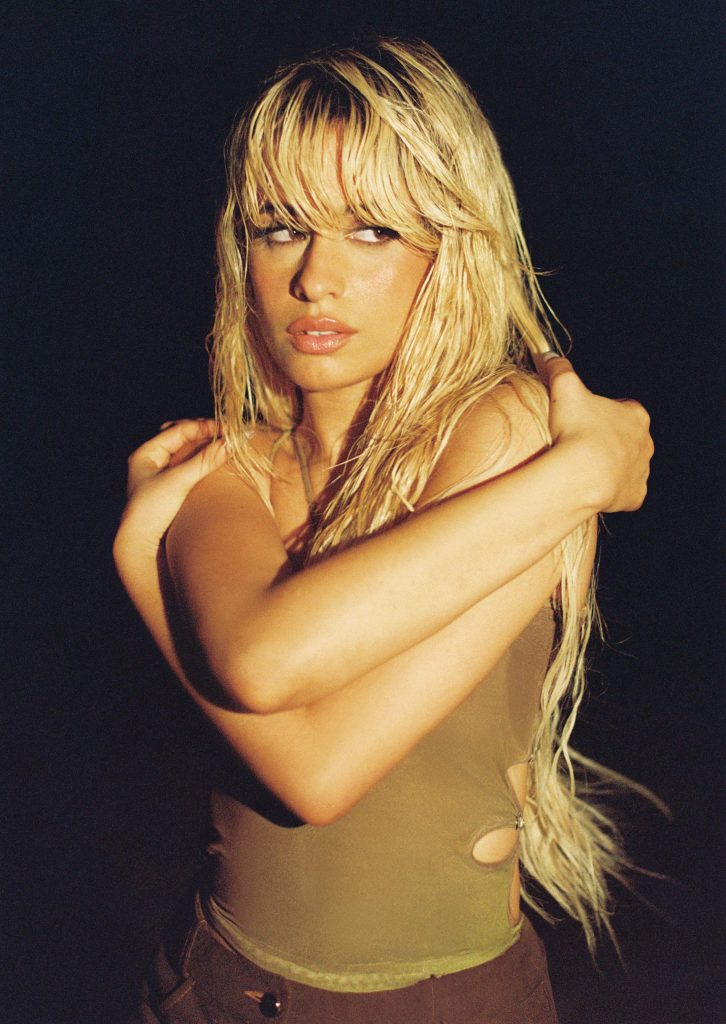
The left-field sample on ‘I Luv It’ — the chorus of Gucci Mane’s ‘Lemonade’ (2009) — is the first clear hint at their influence. Cabello also names T-Pain as an inspiration on ‘C, XOXO’, which explains her willingness to distort and toy with her vocals in a more pronounced way on this album. There are also some high-profile rap collaborators on the record — including some with Miami ties — and a subtle, if-you-know-you-know nod to Pitbull, whose music was ubiquitous on Miami’s streets long before he gained international notoriety in the late-aughts.
If her last album, 2022’s ‘Familia’, was a tribute to the music Latine youth grow up listening to with their families — including that of Cuban music icons Gloria Estefan and Celia Cruz, who is name-checked on the album — ‘C, XOXO’ is an homage to the music those same kids blast in their cars on joy rides to the beach with their friends when they hit their teens and early-20s.
That’s one reason Cabello takes exception with the critique that the creative transition from ‘Familia’ to ‘C, XOXO’ is too large a leap.
“I feel like it was actually, for me, what felt like, on the inside, a very authentic evolution. ‘Familia’ was me digging my heels further into the soil that made me,” she explains. “I have these sensory memories of my parents playing these songs in the living room, and I intentionally went back and tried to pay an homage to that part of my life.”
She argues the contrast people hear on ‘C, XOXO’ doesn’t run counter to the work she’s done in the past. Instead, it’s the next logical step in a continuum of cultural- and self-discovery.
“It’s such a common story for kids from Miami. It’s like you have one foot in the door of your parents’ homeland and your family’s culture, and then this really interesting combination of another foot in the room of America and American culture — and Miami makes that a very unique subculture.”
It’s such a common story for kids from Miami. It’s like you have one foot in the door of your parents’ homeland and your family’s culture, and then this really interesting combination of another foot in the room of America and American culture
Camila Cabello
But Cabello also intentionally set out to work with producers who would dare to push her sound in a different direction this time. “That always feels the most exciting to me — when I’m working with someone who doesn’t wanna do ‘Havana Part Three.’”
As she searched for what would become the signature sound of her fourth album, she experimented with Afrobeats, a movement she’s been a fan of for a long time. That exploration led her to El Guincho and eventually to Harris, both of whom shared her desire to take her music to “unchartered territory” and seemed less preoccupied with making “a big, catchy pop song.”
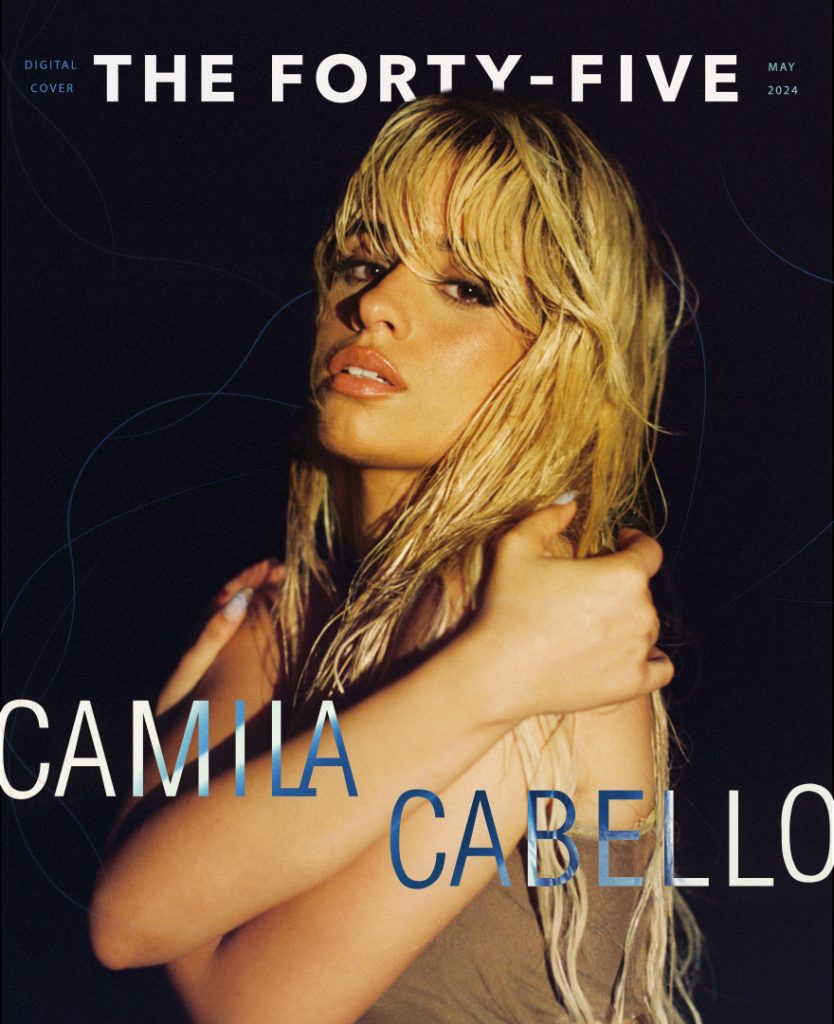
She describes El Guincho as “ruthless in terms of his taste,” but also as someone who took an earnest interest in her songwriting skills. “He really believed in me taking on the bulk of the songwriting duties.”
“I don’t like working with people who just ‘yes’ everything,” Cabello tells me. “It feels great in the moment… but it doesn’t really produce the best work.”
“It’s always the most exciting to me – when I’m working with someone who doesn’t want to do ‘Havana Part Three’
Camila Cabello
That progressive push has proven a little too abrasive for some listeners, and she theorises there may be another reason for the disconnect they’re experiencing. She’s been spending a lot of time at home over the past few years, first in the aftermath of the pandemic, and more recently with extended family arriving from Cuba amid a historically austere period on the island. It’s a pretty down-to-earth existence for a world-famous pop star; one she wants to preserve.
“I don’t really show a lot of behind-the-scenes,” she tells me. “That process becomes performative and not sacred.” There’s no ‘Get Back’-style documentary to prime audiences for an imminent musical shift, or to show fans “how I got from point A to point G.” Critics have questioned the authenticity of her ‘C, XOXO’ persona, but Cabello doesn’t feel the need to explain herself. “That’s the trade that I make for my sanity and, ironically, my authentic life.”
As for the slightly racier image she’s cultivating during this album cycle — the ‘I Luv It’ single cover is a close-up image of Cabello pushing her breasts up in a cardigan and peekaboo baby-blue lace bra — she says that’s also been misconstrued as inauthentic.
“I feel like it’s like my way of, I don’t know, being of service to the world,” she says. “My favourite artists — especially my favourite female artists — make me feel strong and empowered, and it feels cool that I feel like I’ve taken inspiration from that. And, hopefully, I can do that for people with this album, because that’s definitely very much the goal.”


